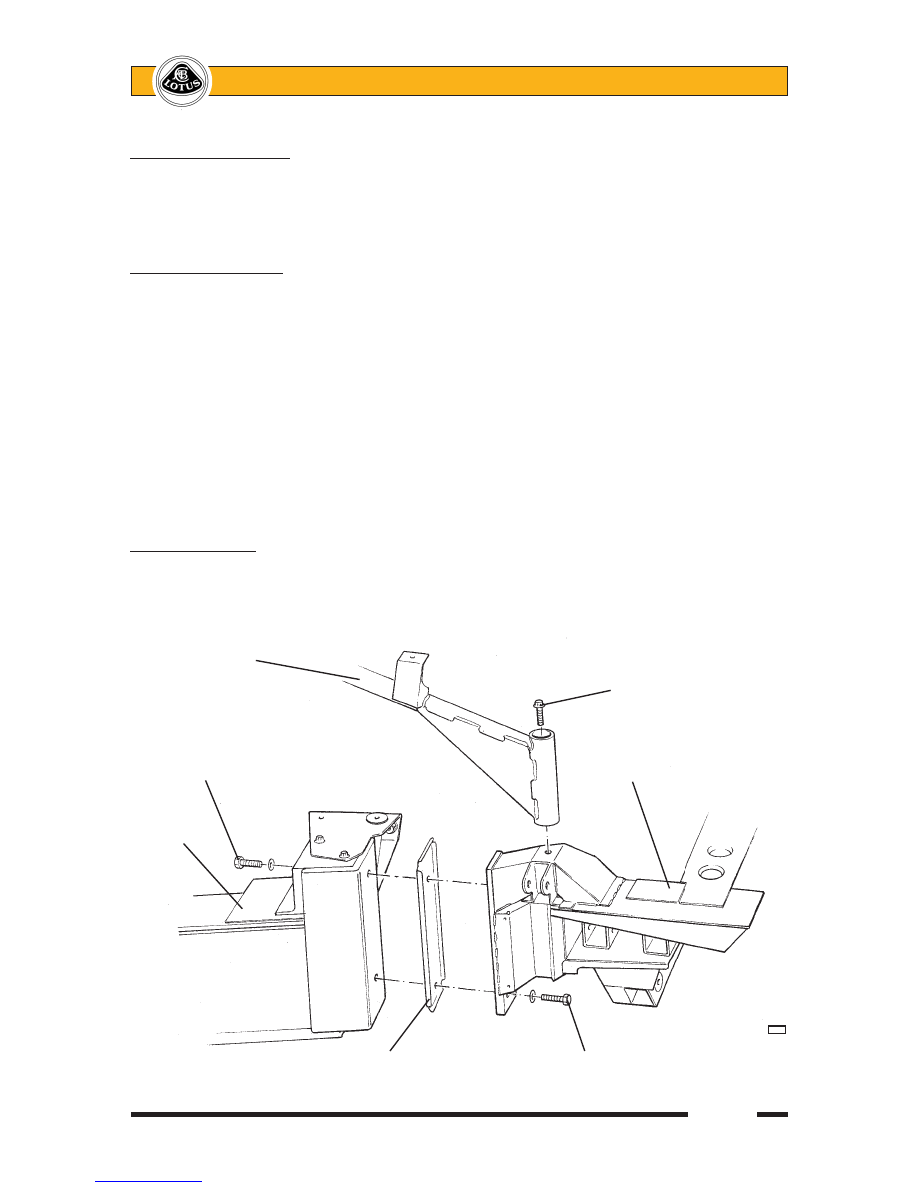Lotus Eleven/Elise/Exige. Manual - part 10

Page 5
Lotus Service Notes
Section AH
AH.3 - REAR SUBFRAME
The rear ends of the chassis siderails are linked by a fabricated sheet steel subframe which provides
mountings for the rear body section, rear suspension pivots, engine rear stabiliser, exhaust muffler and seat
belt mounting frame struts. The subframe is secured to the siderails by two M12 bolts at each side, with an
anti-corrosion shim plate interposed.
To remove rear subframe
1. Remove the rear clamshell (see section BR).
2. Remove exhaust heatshields, catalytic converter and muffler.
3. Disconnect the parking brake cables, wheel speed sensor harnesses and rear brake hydraulics. Release
the driveshafts from the hubs, and remove both rear suspension assemblies complete, providing alterna-
tive support for the driveshafts.
4. Disconnect the inertia switch, and release from the subframe the oxygen sensor harness, wheel speed
sensor harnesses and brake pipes.
5. Release the engine rear stabiliser mounting from either the subframe or transmission.
6. Release the roof hoop backstays from the subframe. Remove the two bolts each side securing the subframe
to the chassis flange and withdraw the subframe from the car.
Fitting rear subframe
When bolting the subframe at each side to the chassis rail rear flange, ensure that the anti-corrosion
shim plate is interposed. The lower fixing bolts should be inserted from the rear, using a washer and Nyloc nut
inside the chassis extrusion. Apply Permabond A130 (A912E7033V) to the threads of the upper bolts before
fitting from the front into the weldnuts in the subframe. Tighten all four bolts to 86 Nm. Continue re-assembly
in reverse order to disassembly.
Seat belt mounting
frame backstay
Backstay to subrame
fixing bolt
Subframe upper
mounting bolt Rear subframe
Chassis
a30
Anti-corrosion shimplate Subframe lower mounting bolt